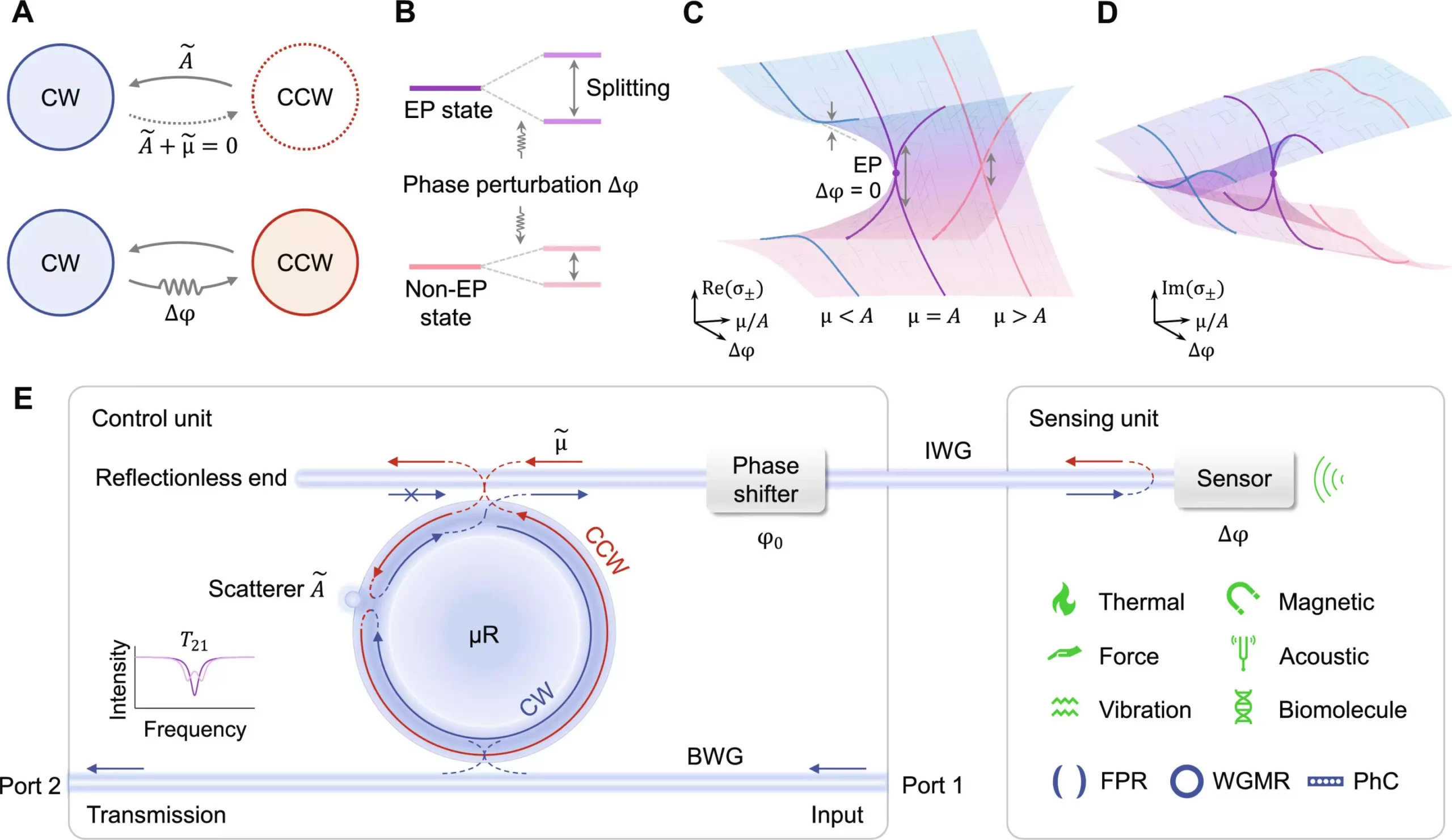Optical sensors play a crucial role in various scientific and technological fields, ranging from detecting gravitational waves to imaging biological tissues for medical diagnostics. These sensors utilize light to monitor changes in the environment they are placed in, including factors such as chemical biomarkers and temperature. One of the main challenges faced in optical sensing is the need to enhance sensitivity to detect subtle signals amidst background noise. A recent study conducted by Lan Yang and Wenbo Mao from Washington University in St. Louis sheds light on the potential of exceptional points (EPs) in revolutionizing optical sensing.
Yang and Mao’s research introduces an EP-enhanced sensing platform that addresses the limitations of existing methods. Unlike traditional techniques that involve modifying the sensor itself, their innovative approach features an EP control unit that can be connected to external sensors. This design enables the tuning of EPs solely through adjustments to the control unit, eliminating the need for complex sensor modifications. According to Yang, this system offers a breakthrough in EP-enhanced sensing, making it more versatile and widely applicable. By connecting a phase-sensitive sensor to this configuration, researchers can achieve enhanced sensitivity and a lower detection limit across various sensing scenarios.
By separating the sensing and control functions, Yang and Mao have overcome the stringent physical constraints associated with operating sensors at EPs. This breakthrough paves the way for EP enhancement to be integrated into a diverse array of conventional sensors, including ring resonators, thermal sensors, magnetic sensors, and those used for detecting vibrations or biomarkers. The EP control unit allows the sensor to operate differently, while still benefiting from EP enhancement. In a test conducted by Yang’s team, the EP-enhanced configuration demonstrated a six-fold reduction in the detection limit compared to a conventional sensor.
Mao highlights the potential for translating this research into practical applications, with a particular focus on medical uses. Enhancing magnetic sensing could lead to improvements in MRI technology, potentially eliminating the need for specialized temperature-controlled rooms currently required for MRI procedures. By leveraging EP enhancement, medical professionals could enhance the accuracy and efficiency of diagnostic imaging techniques, ultimately benefitting patients and healthcare providers alike.
The integration of exceptional points into optical sensing systems represents a groundbreaking advancement in the field of sensor technology. Yang and Mao’s innovative approach to EP-enhanced sensing offers a more efficient and adaptable solution, with the potential to enhance a wide range of existing sensors. By decoupling sensing and control functions and utilizing EP control units, researchers can achieve unprecedented levels of sensitivity and detection limits in optical sensing applications. This research opens up a realm of possibilities for enhancing sensing capabilities across various industries and scientific disciplines.


Leave a Reply